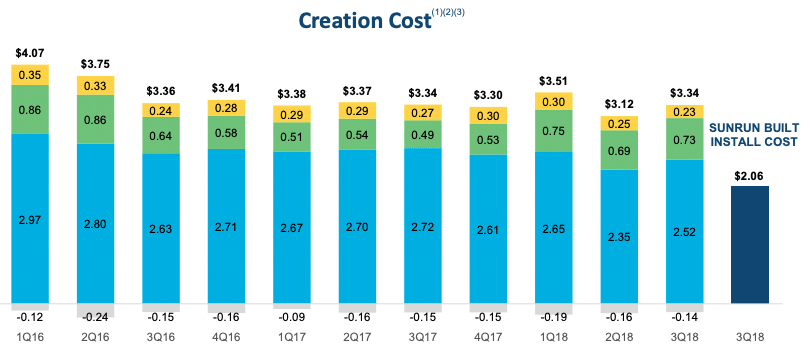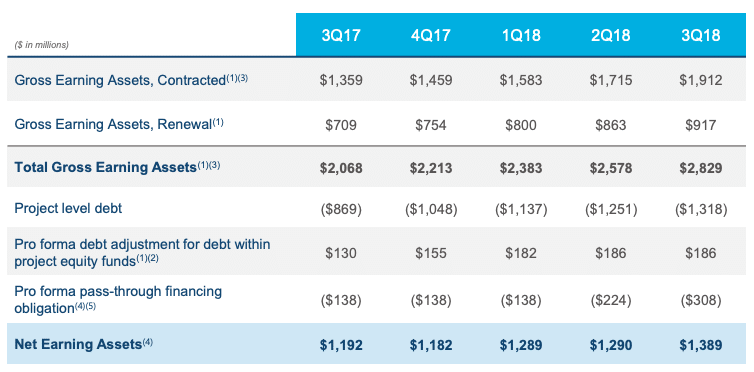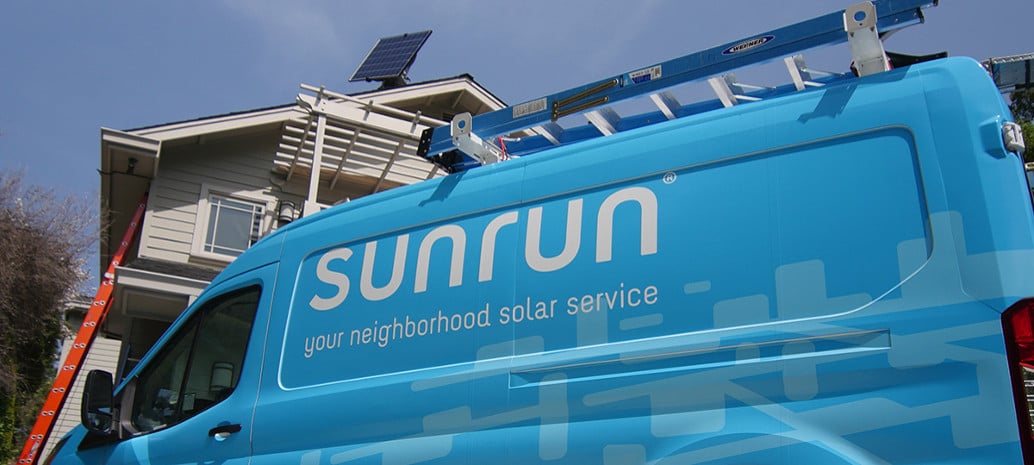A year ago there was the question of whether Sunrun had finally surpassed Tesla as the nation’s largest residential solar company. In the third quarter of 2018 there was no contest: despite some commercial installations in Tesla’s 93 MW, Sunrun reached a record 100 MW of solar deployed, solely in the residential market.
Some of this comes from Elon Musk being far more concerned with EVs and batteries and shifting away from putting salespeople on the street to drawing customers from Tesla stores; but the other side is Sunrun’s steady, consistent growth through larger residential market ups and downs.
The company’s deployment of 100 MW is an increase of 10% over the prior quarter, and while exact numbers were not clear the company has grown its direct business more than 50% year-over-year.
There was less progress to report on cost; and Sunrun’s cost to install solar increased modestly during the quarter. More significantly the company’s sales and marketing costs have been high throughout 2018, which shows that there is a price tag on Sunrun’s rapid growth and paying all those sales people to chase leads.

Despite this increase in costs Sunrun’s profitability is improving. All companies that finance and own third-party solar suffer from quarterly losses while building long-term value in portfolios of assets. However Sunrun managed to report only $24 million in losses from operations, and a net loss of $48 million, both of which are substantial improvements on previous quarters.
This came despite only 15% of the company’s sales being cash and third-party loan, and with less than half of its revenues coming from PV system and other product sales.
Meanwhile, the company’s calculation of “net earning assets” – total expected future revenues minus the cost of financing these projects – has risen to $1.39 billion. Unfortunately, as we have noted before neither profitability nor the value of assets can be clearly compared to other third-party solar companies.

This is in part because there is no standardization of terms or methodologies across third-party solar companies, and in part because Tesla and Vivint have a lower mix of third-party solar deployed these days.
Sunrun also notes substantial progress with its BrightBox solar+battery offering. The company notes that in its direct business 10% of customers across the nation are choosing to include batteries, and 25% in California. Sunrun expects to have installed more than 5,000 battery systems by the end of the year, and for BrightBox installations to grow more quickly than solar-only.
This content is protected by copyright and may not be reused. If you want to cooperate with us and would like to reuse some of our content, please contact: editors@pv-magazine.com.









how can I add battery power to my system now.
Contact Sunrun about that.